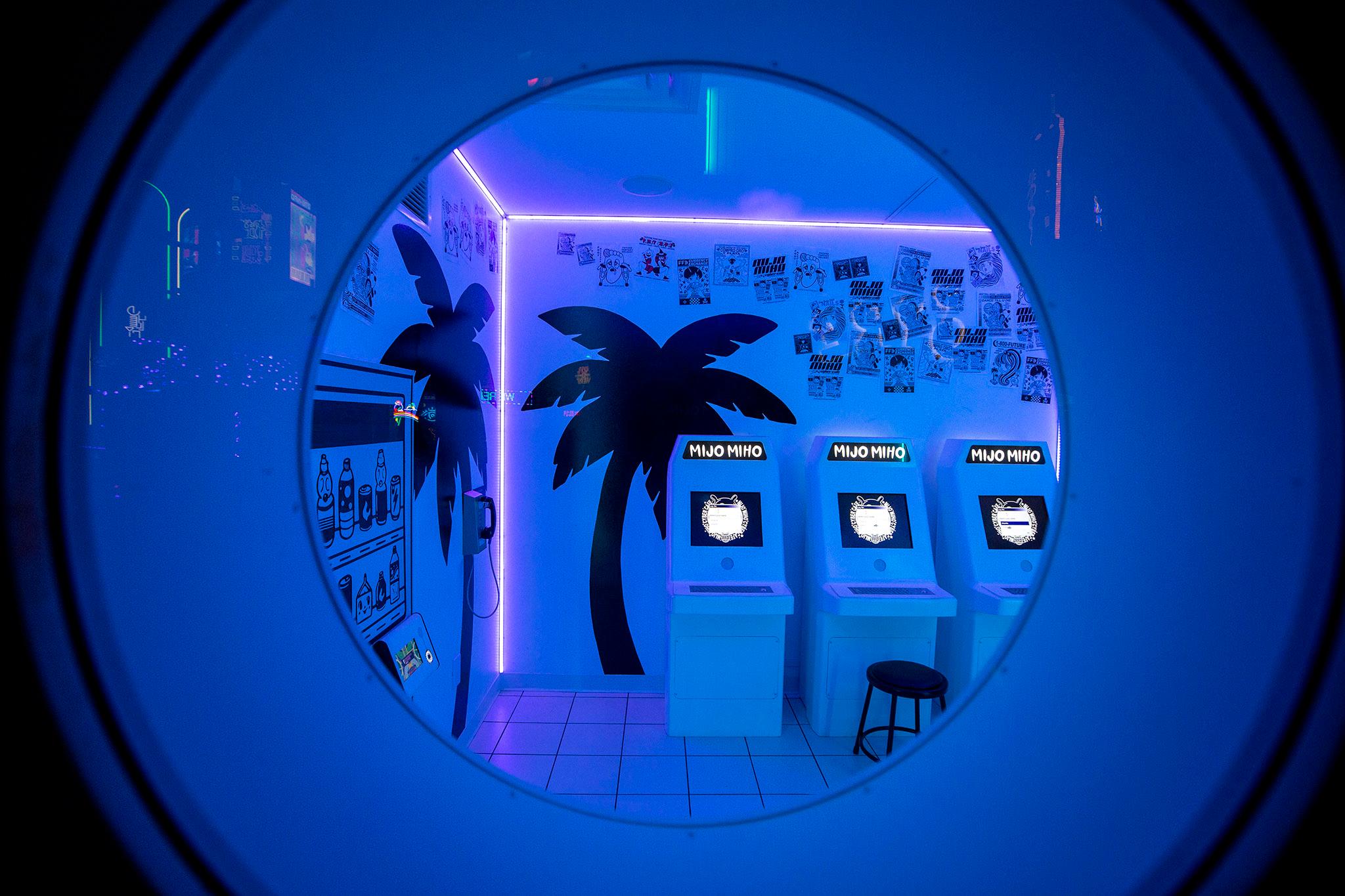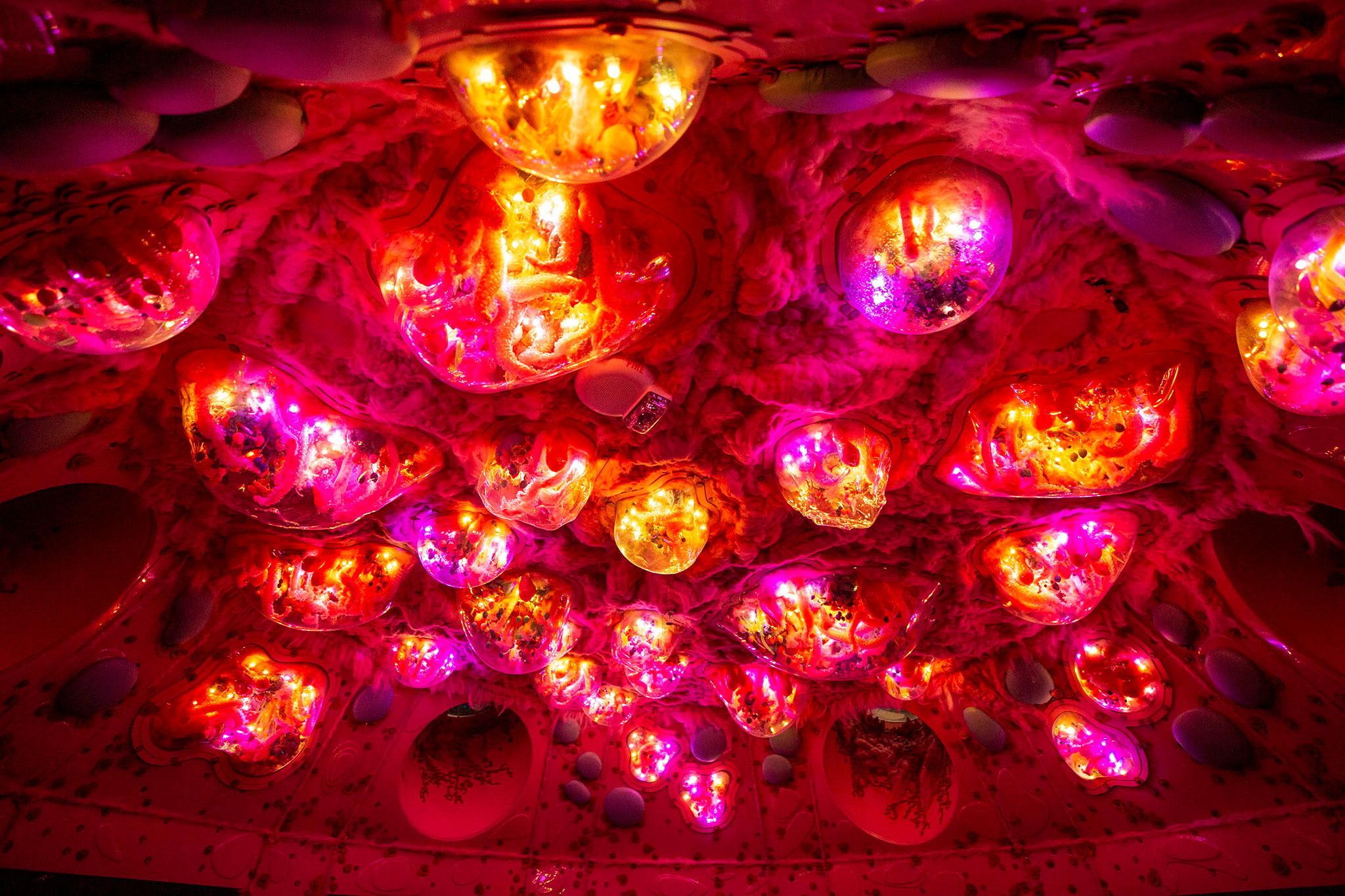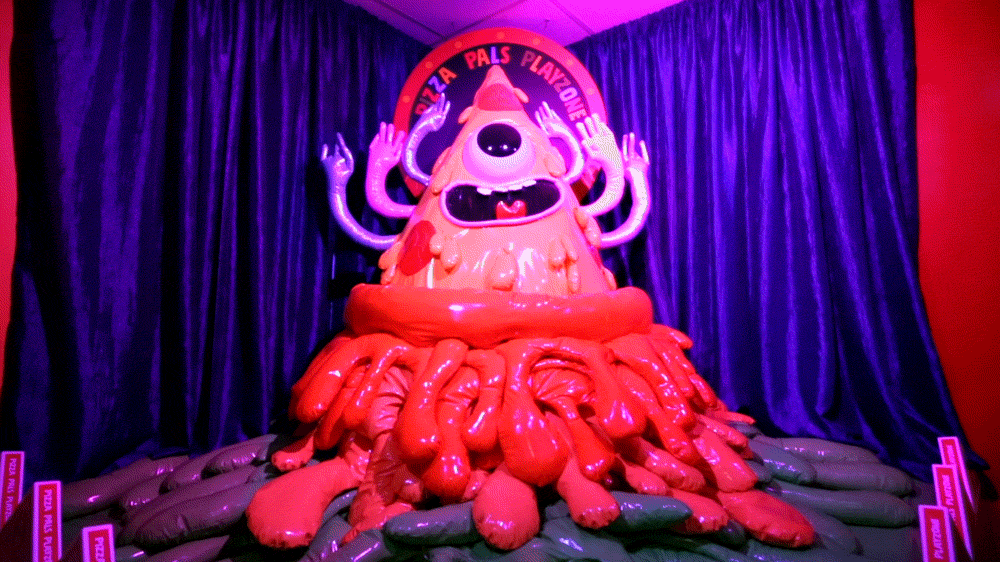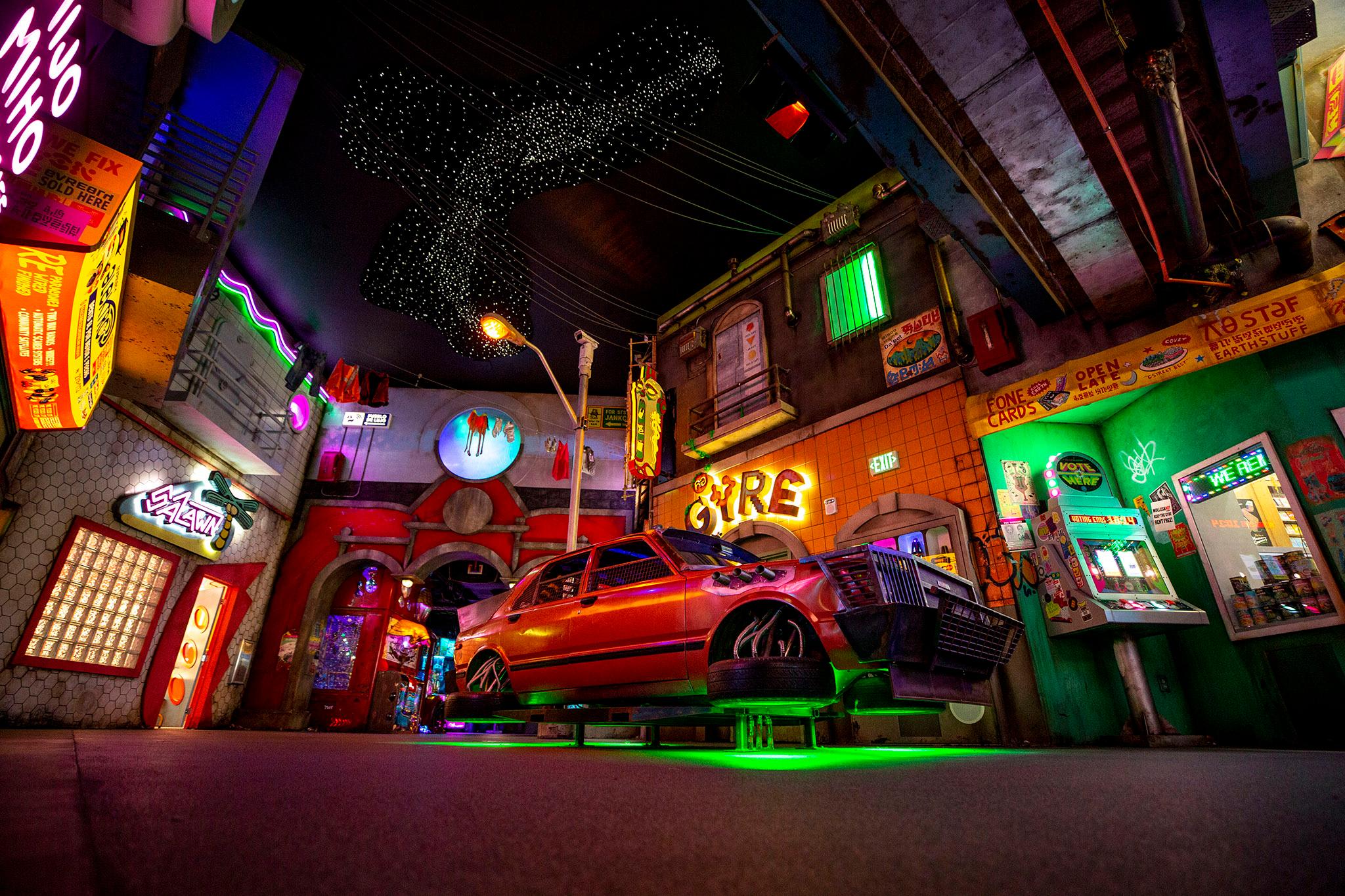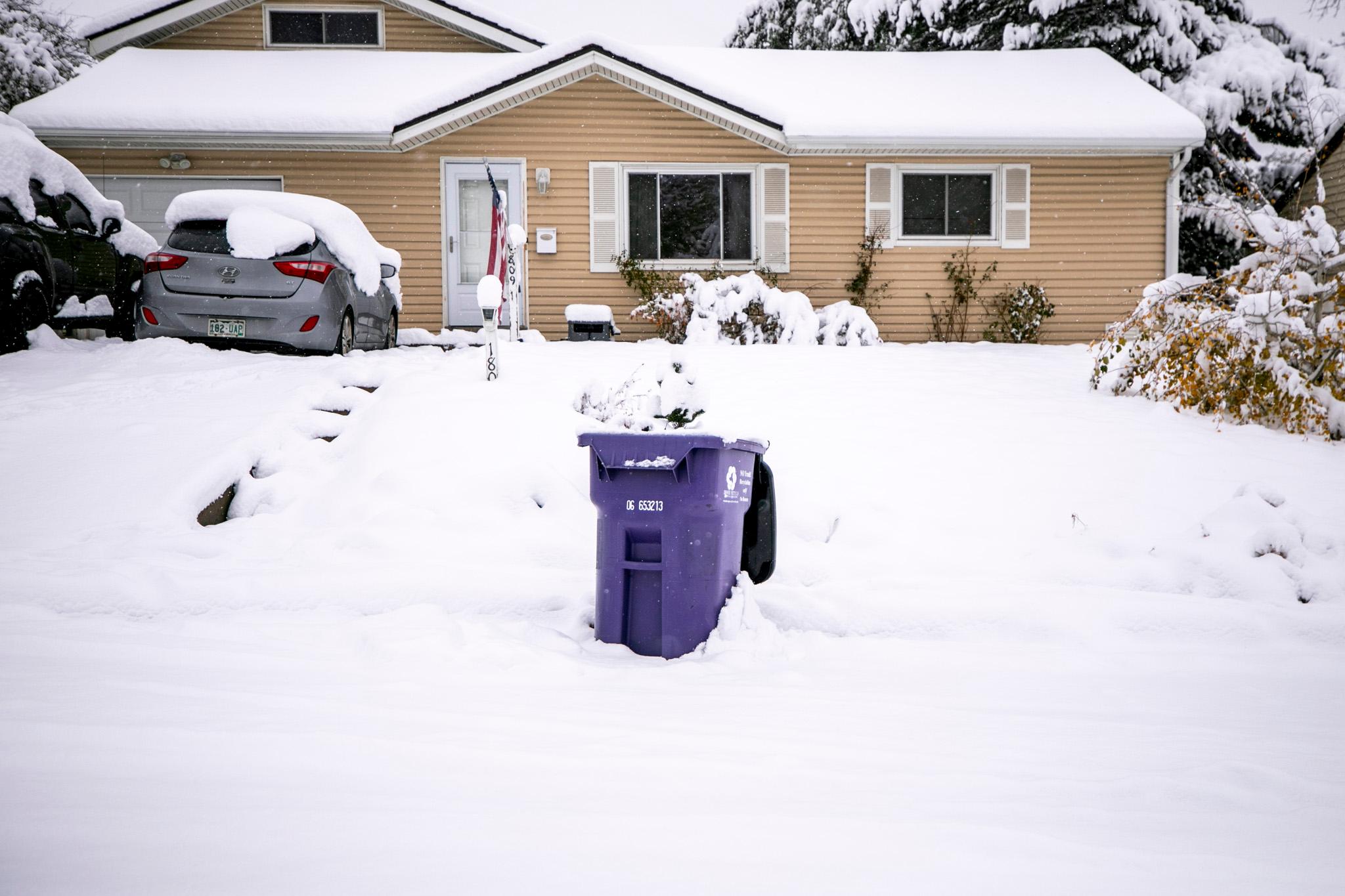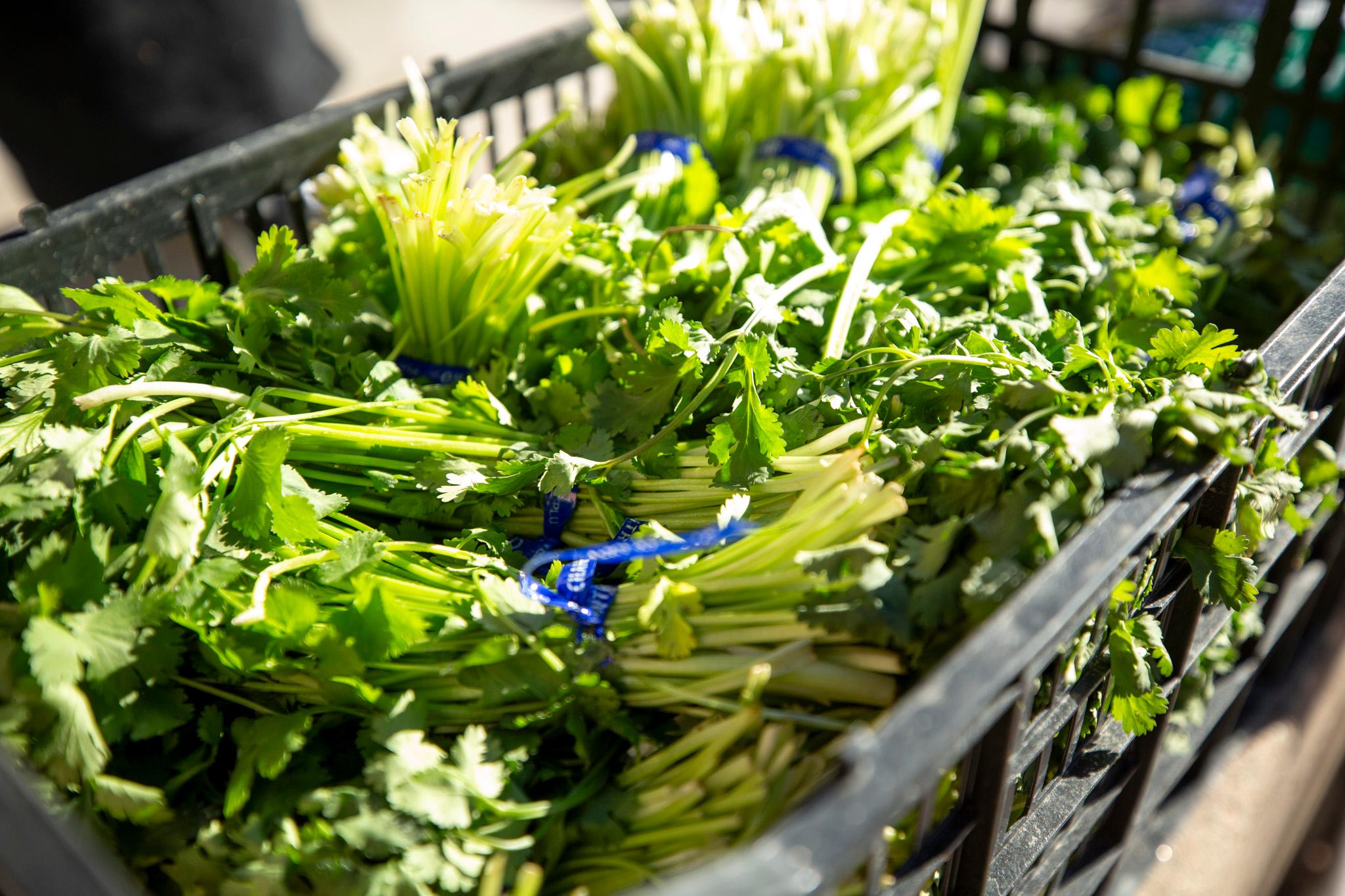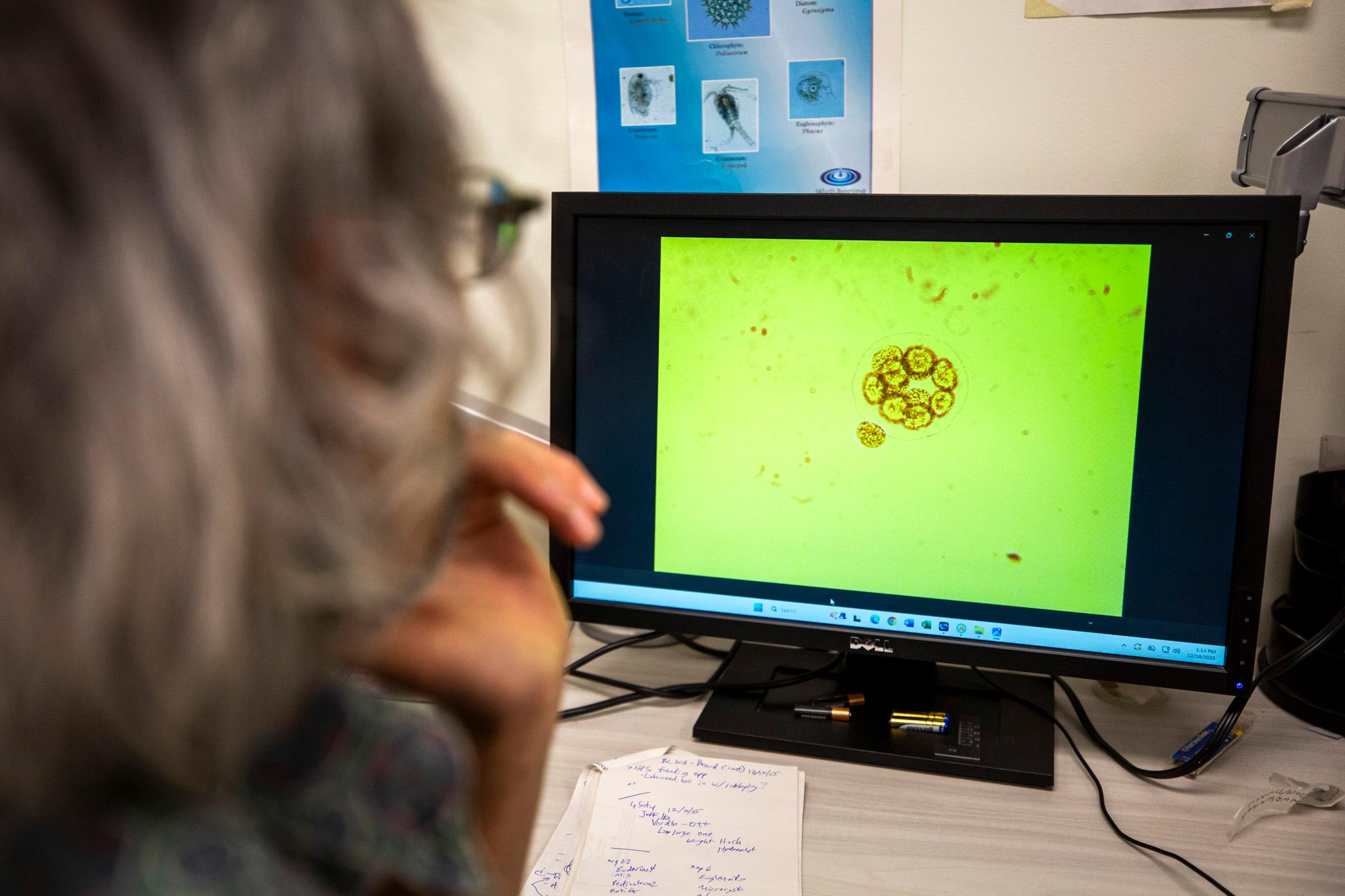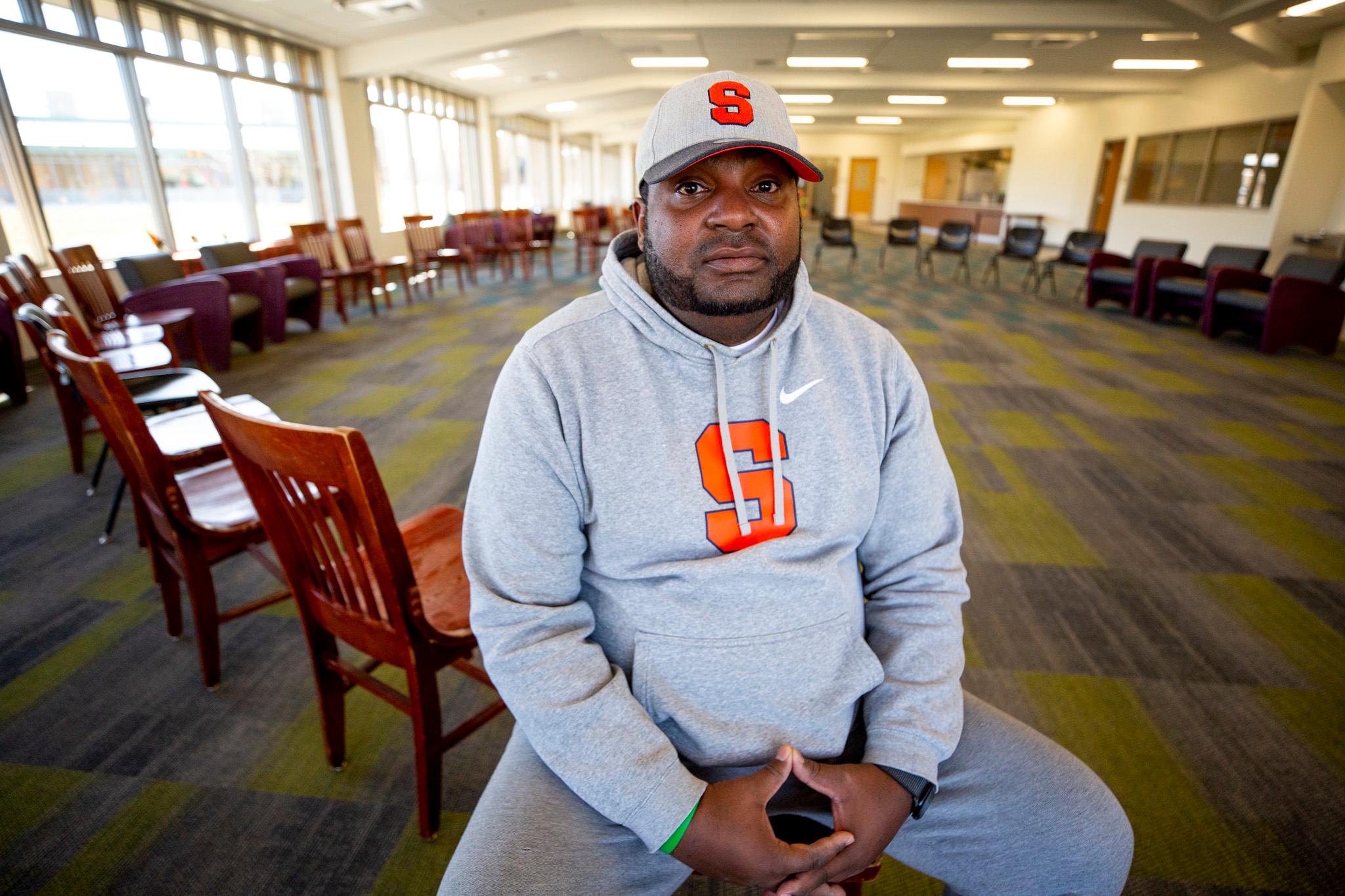It's been a long wait, but Meow Wolf Denver is finally here. What do you need to know before you check it out? We've put together a guide to help you, including how to get tickets, where to park, what to expect, and how best to experience the immersive art experience.
What is it?
Meow Wolf: Convergence Station is a massive, 90,000 square foot narrative art exhibition built around the concept of quantum travel. Guests will explore four floors and more than 70 immersive, interactive installations designed by more than 300 creatives, including more than 110 Colorado-based artists. There's also a gift shop and an in-world fast-casual restaurant called HELLOFOOD café, whose menu features items from local businesses like Raices Brewing Company. At night, Meow Wolf will host events and concerts out of the Perplexiplex, a 488-person immersive performance venue outfitted with interactive tech and projection equipment.
"Meow wolf's mission is to inspire creativity in people's lives," said Meow Wolf co-founder Sean Di Ianni. "This is really a major milestone for Meow Wolf. It's a huge milestone in our mission of inspiring creativity in people's lives, and I really think that this project and all of the others that we've created so far are proving out the power of the imagination to transform our words."
Check out our previous coverage to learn more about Meow Wolf's history and significance in Denver, as well as the elaborate fan theories behind the group's marketing stunts.
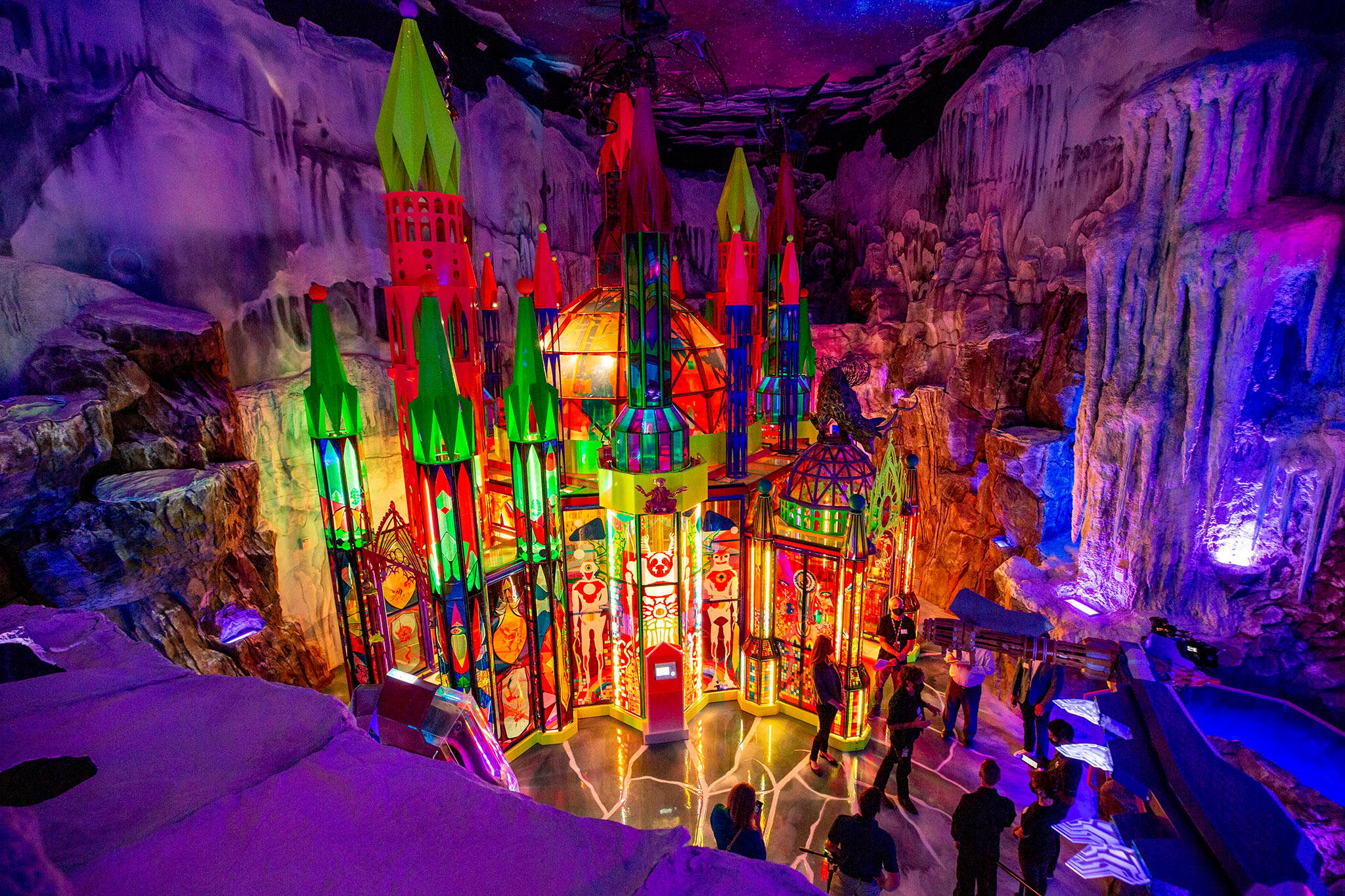
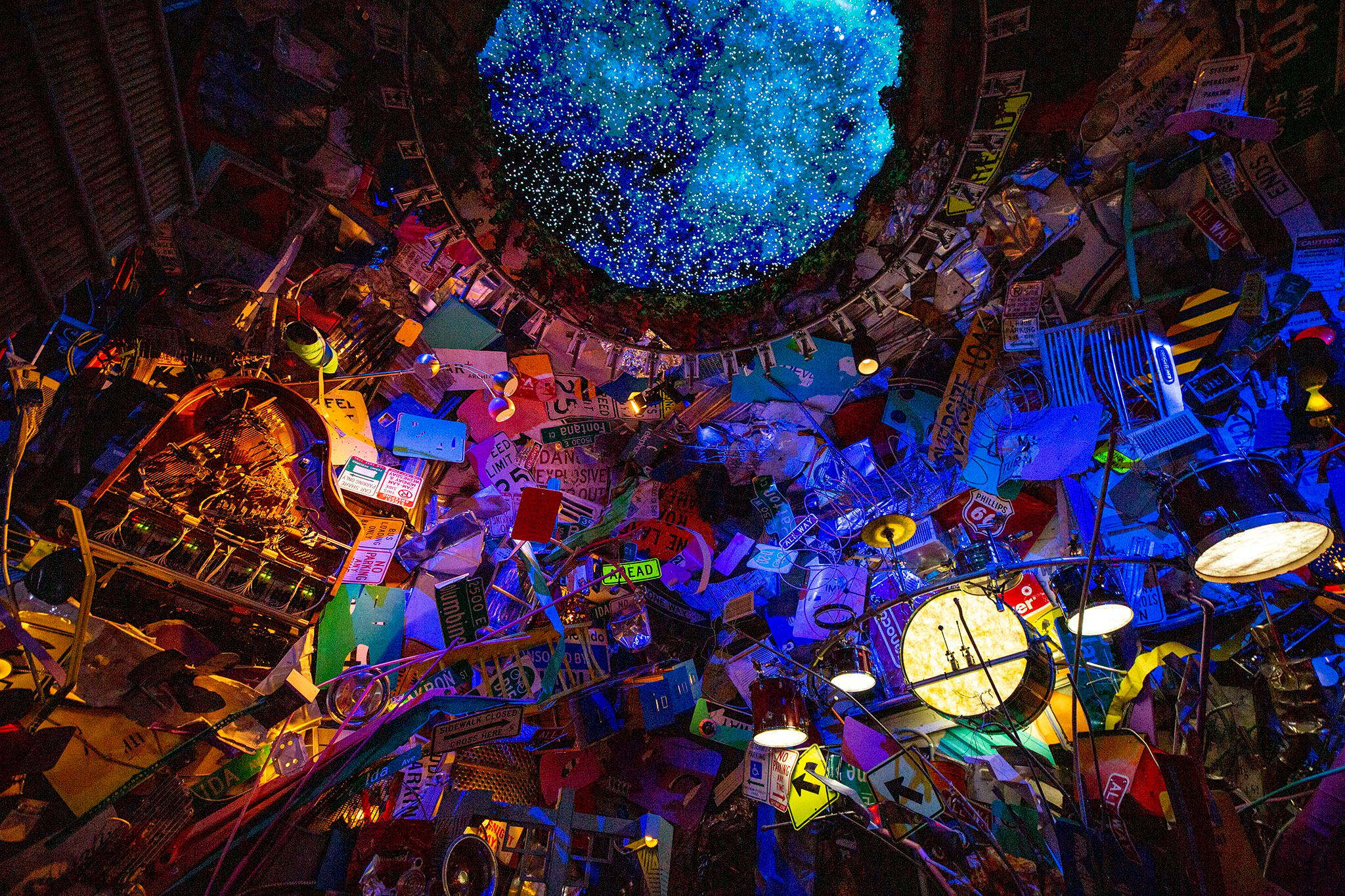
Tickets
Convergence Station arrives Sept. 17, and will be open from 10 a.m. to 10 p.m. Sunday through Thursday, and from 10 a.m. to 12 a.m. on Fridays and Saturdays. Tickets are $35 for Colorado residents, $45 for non-residents and $40 for children, seniors and military.
Weekend tickets are already sold out for the next several weeks, so if you want to go on a Saturday or Sunday, you may need to book at least a month in advance. And while it's looking pretty easy to book weekday tickets on shorter notice, weeknight tickets are going fast, so plan to book those at least two to three weeks in advance.

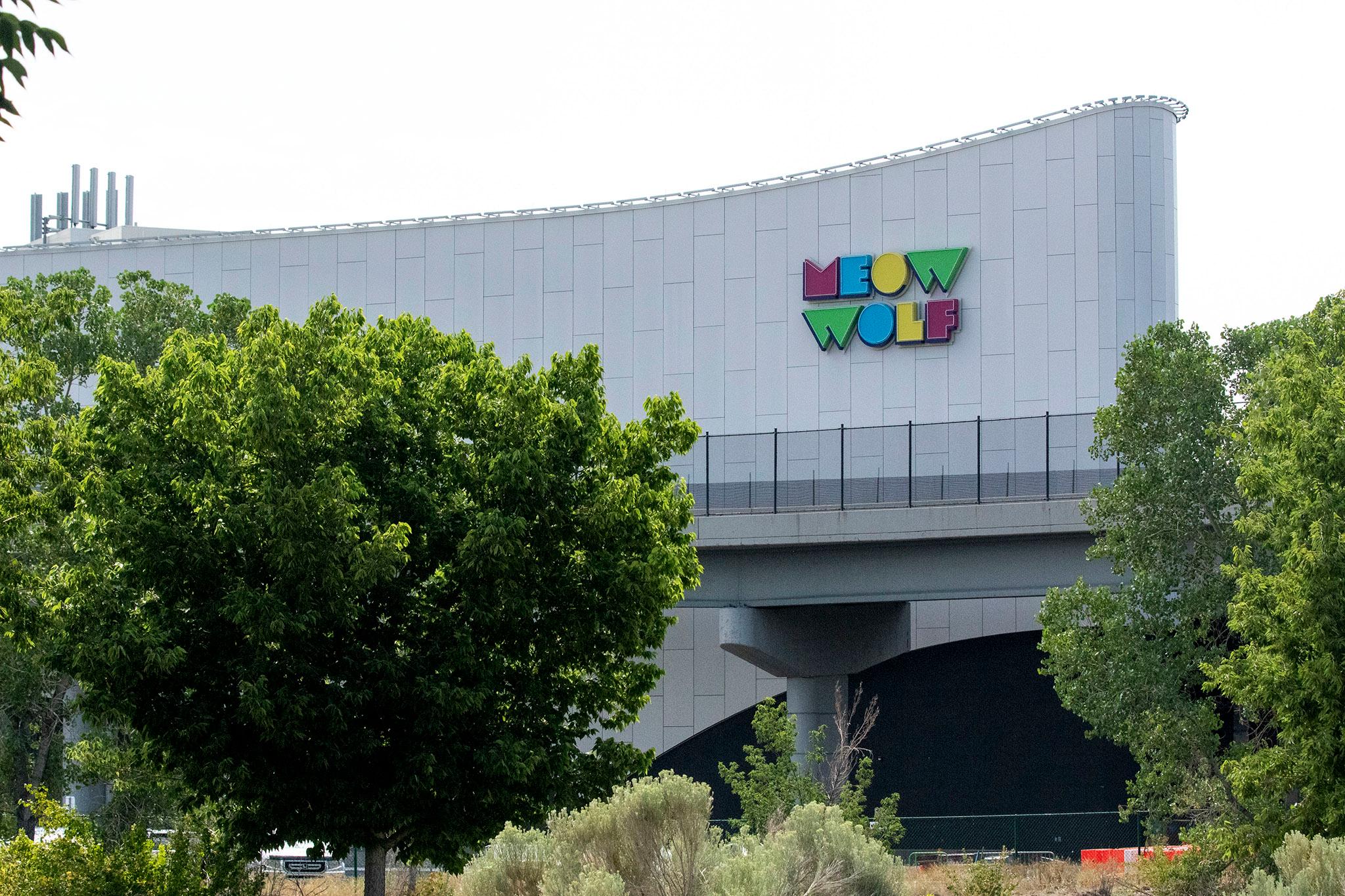
Getting there
The exhibit is easy to spot. It's a large, white, oddly shaped building at 1338 1st St. in Sun Valley, near Elitch Gardens and Empower Field at Mile High.
Parking, on the other hand, might be a bit of a challenge. Paid parking at Meow Wolf is available in the 650 Walnut St. garage (about a 7-minute walk) and at the 1338 1st St. entrance only on non-NFL game days, with the exception of accessible parking, which is first-come, first-serve. It might be a good idea to get there early to snag a spot or allow for walking time from your car. You can learn more about parking rates and times here.
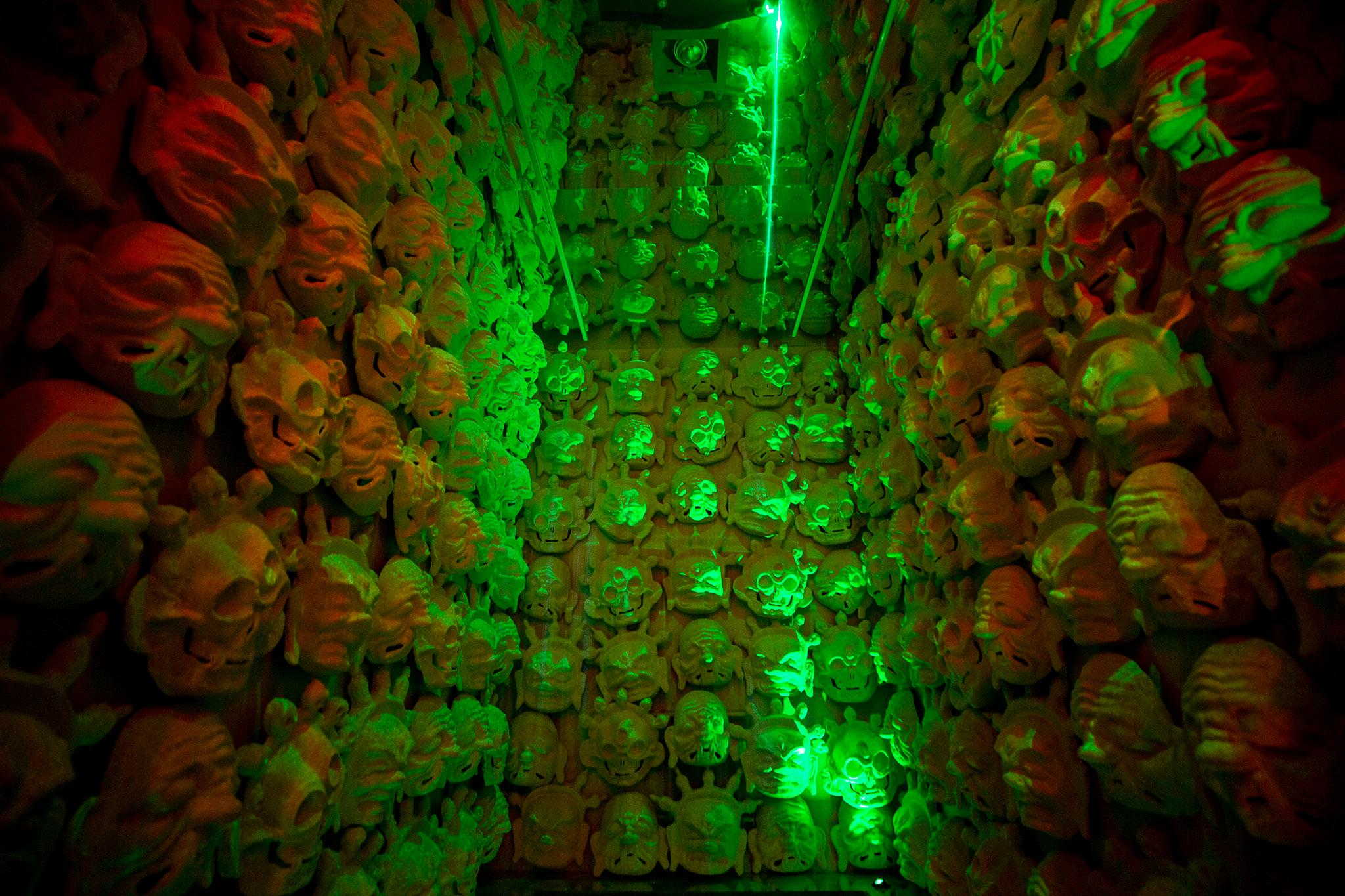
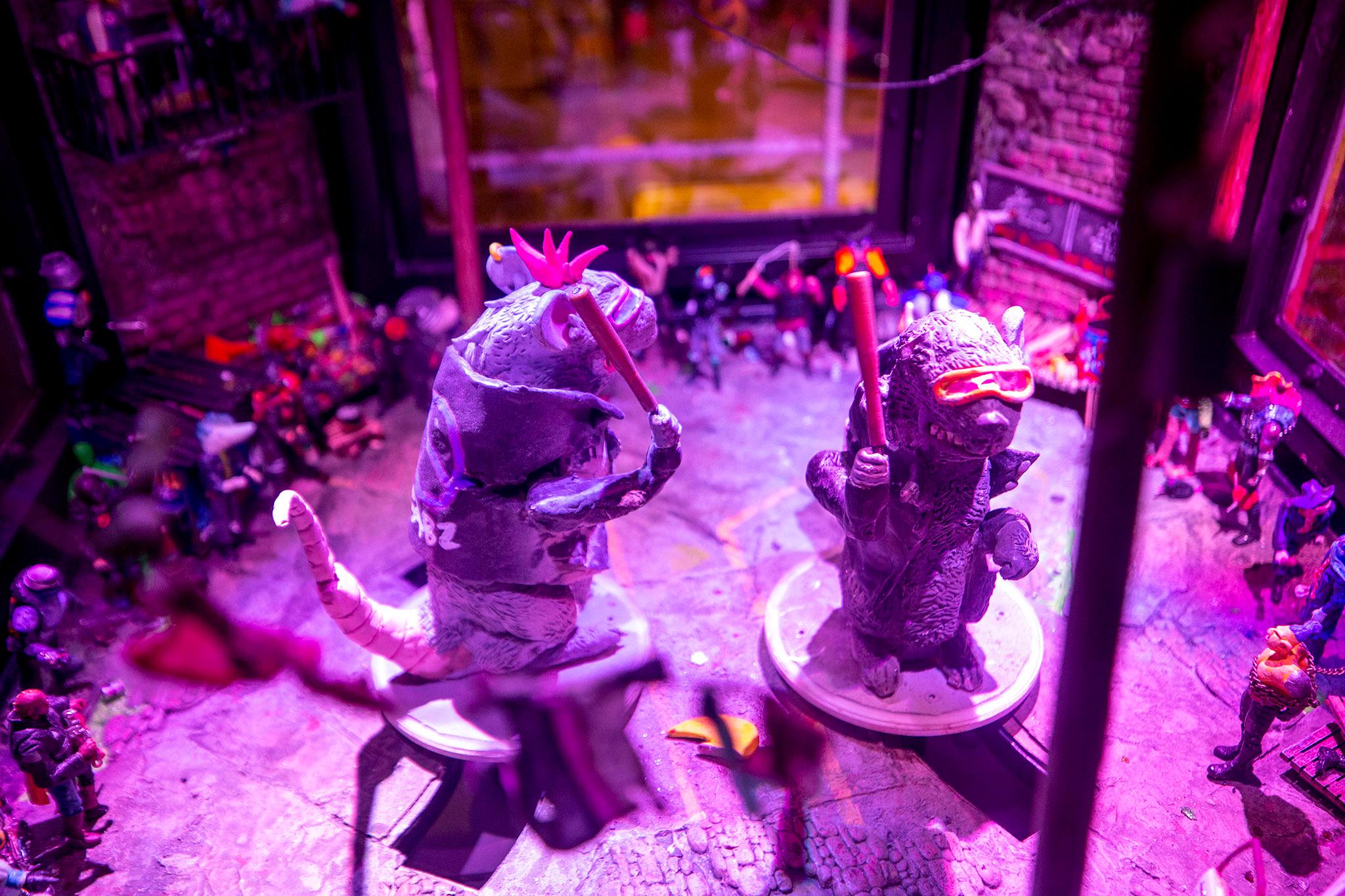

Safety/COVID policy
Guests over the age of four are required to wear masks while exploring the Convergence, and Meow Wolf has extra masks on hand for those that need them.
Where in Denver you need to wear a mask, or show proof of vaccination
Meow Wolf also hosts concerts in the evening. All concert and special event attendees must be fully vaccinated and provide proof of vaccination upon entry. All of the current health and safety guidelines are subject to change as the COVID situation does.
The story
Each Meow Wolf experience is built around a mysterious nonlinear narrative. Because it's so complex, there are multiple ways you can experience it. Some visitors will be content to simply move through the space and look at the art. Others will spend hours or even multiple visits trying to sort through every detail and piece together the narrative.
Convergence Station's story is centered on "QDOT," or the "Quantum Department of Transportation," which relies heavily on the Kaleidoscape ride at Elitch Gardens. QDOT allows travelers to cross between universes via the "TRAM," or Transmonic Rift Access Mechanism system. According to the installation's website, Convergence Station is Earth's first multiversal transit station, which via the TRAM offers "full commuter service to the Convergence: four alien worlds joined together in a rare cosmic event -- a place where memories are currency."
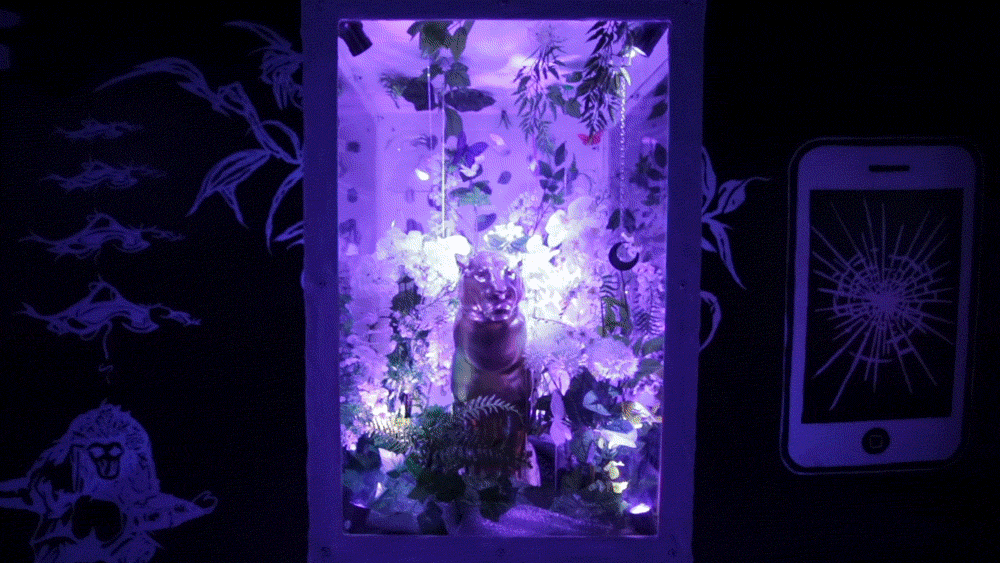
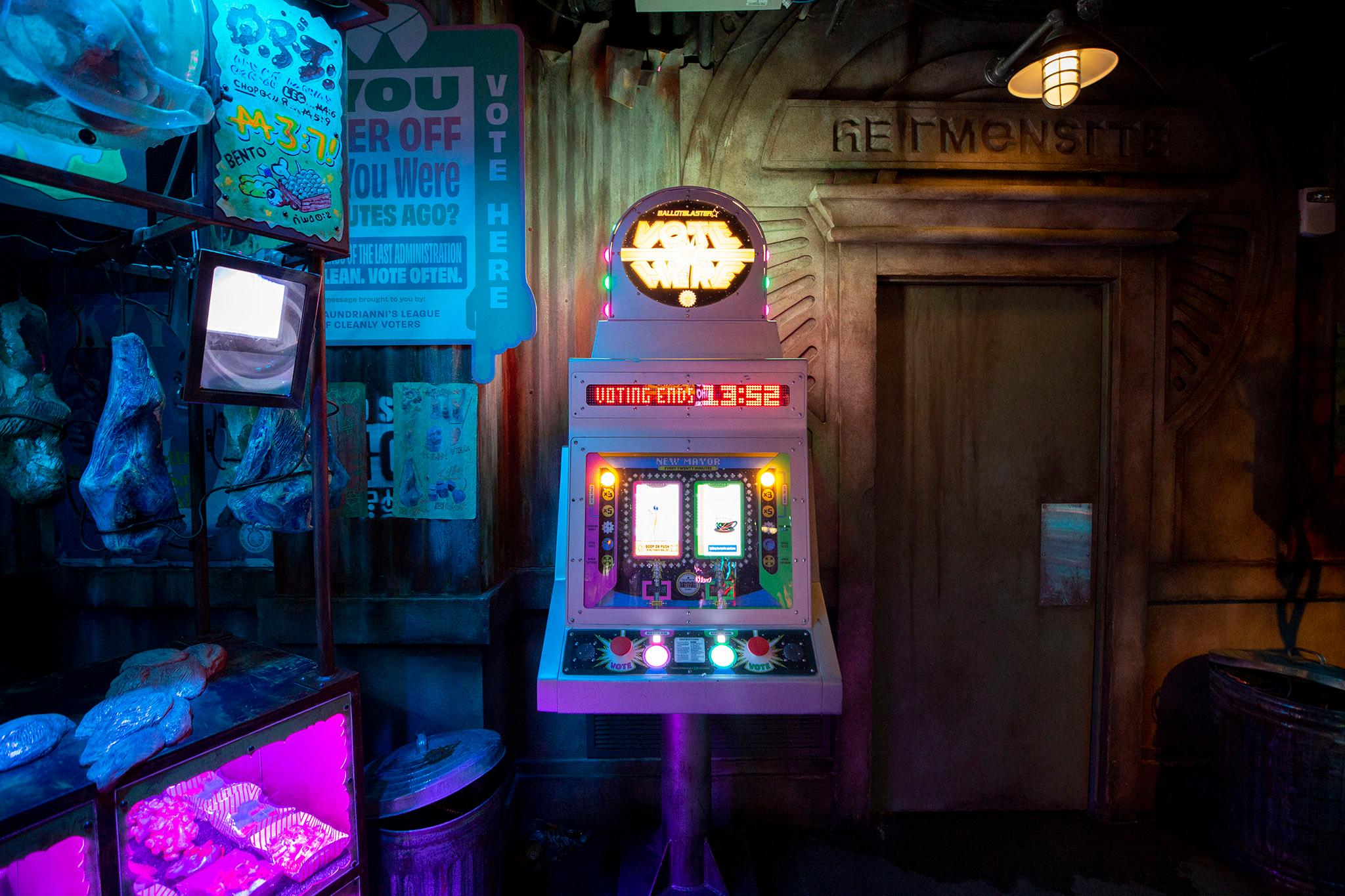
When the four worlds collided, the impact created something called "Memory Storms," which scattered "memories, backstories, and personas" out into the worlds, creating a state of disarray and forcing the worlds to work together to carve out a harmonious future. The worlds came up with a memory banking system called the "Convergence Exchange," which helps collect the displaced memories and return them to their creators. It also allows clients to adopt memories that are not their own.
The Convergence also led to the disappearance of four women. Visitors can uncover the secret of what happened to them, and why the worlds converged in the first place.
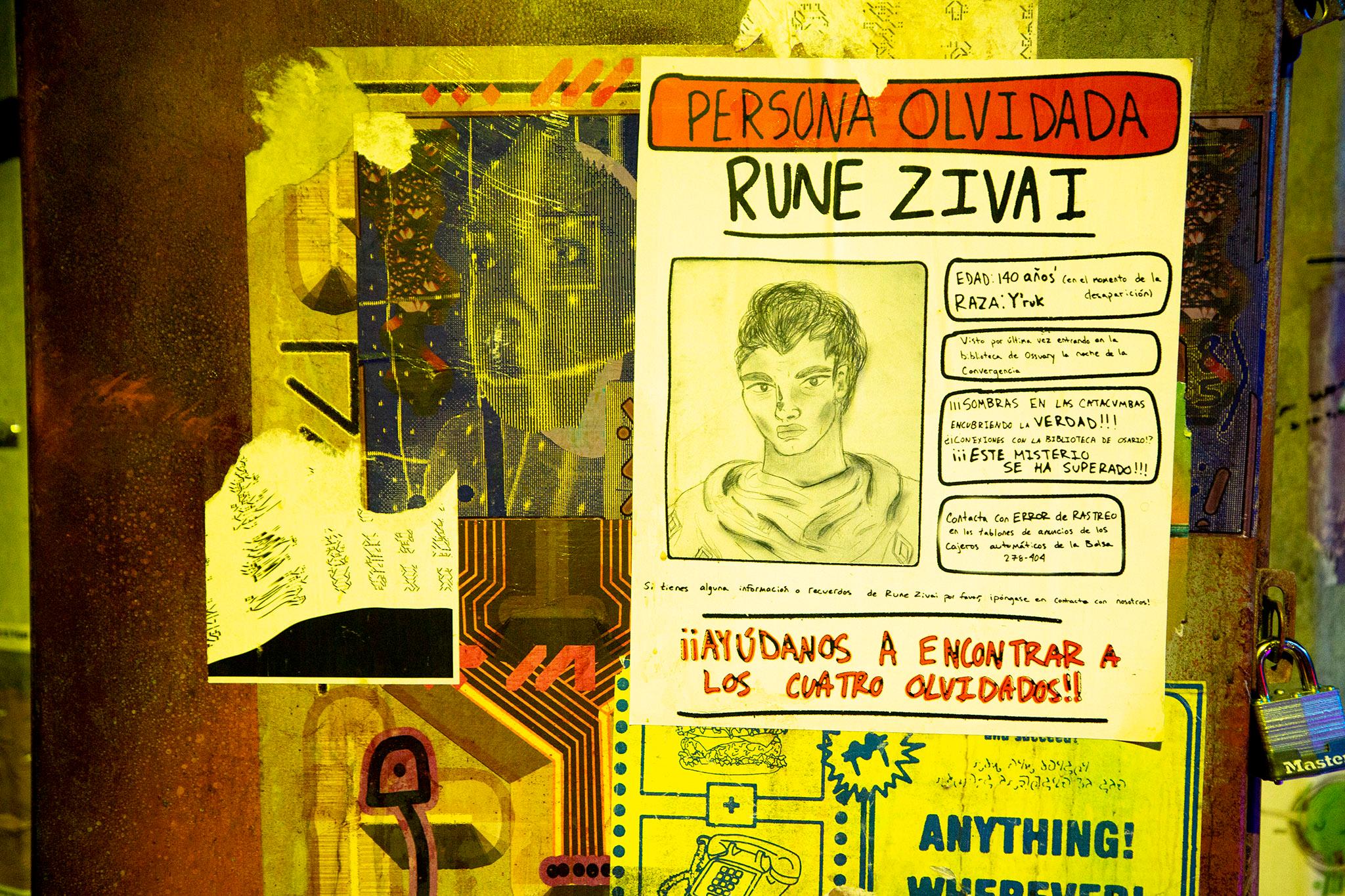
For an extra $3, visitors can also request an optional QPASS, a card that gives you access to the "memories" of the citizens of each world and takes you deeper into the secret stories hidden in the installation. Visitors can view their collected memories at Memory ATMs or online after they leave Convergence Station and use them to piece together the installation's secret narrative. They can also use their QPASS to help return memories to their original creators or to interact with the exhibition's other hidden, interactive Easter eggs.
When you step into Convergence Station, it feels like you've entered a futuristic transit station.
You enter a bright lobby, pick up your QPASS card, and take the TRAM line to the four different stations in the Convergence: "C Street," a gritty urban sanitation district with alleyways, shops and a creative political system; "Eemia," a city that boasts an elaborate Kaleidogothic Cathedral and is struggling to reconnect with the rest of its planet;" "Ossuary," an ancient underground world that stores memories, knowledge and secrets in its subterranean catacombs; and Numina, a six-dimensional sentient habitat that may have opted into the Convergence to observe the way other beings live.
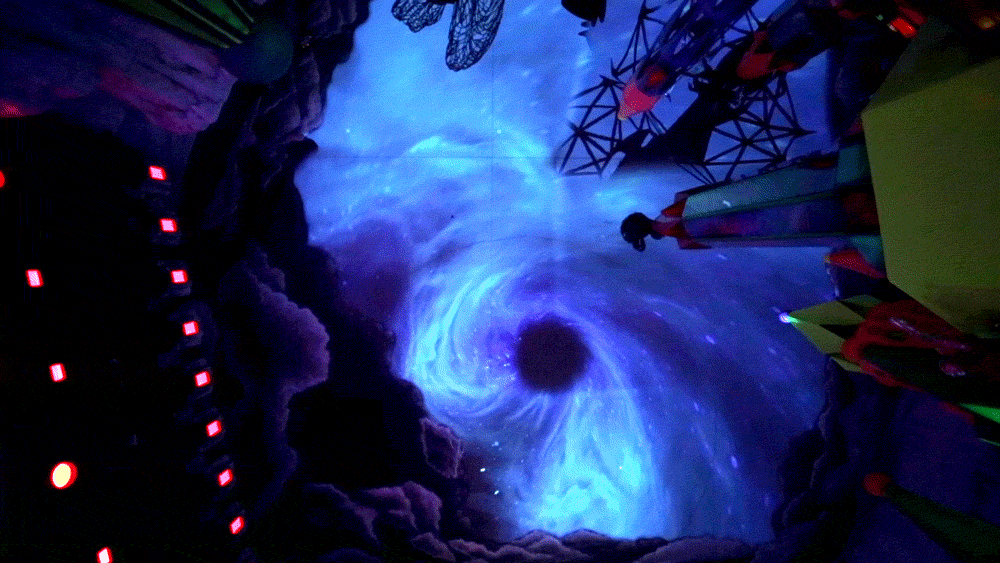

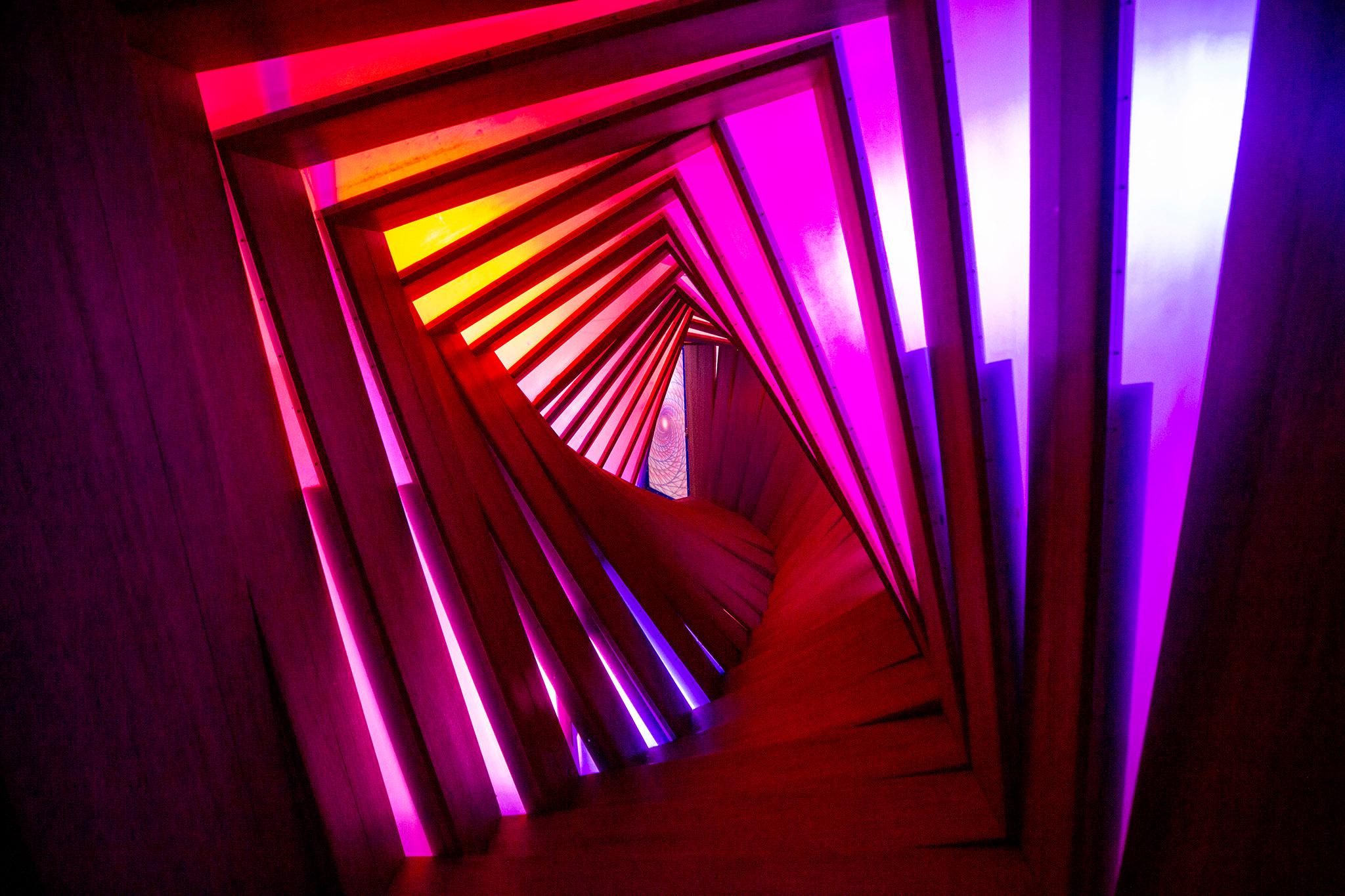
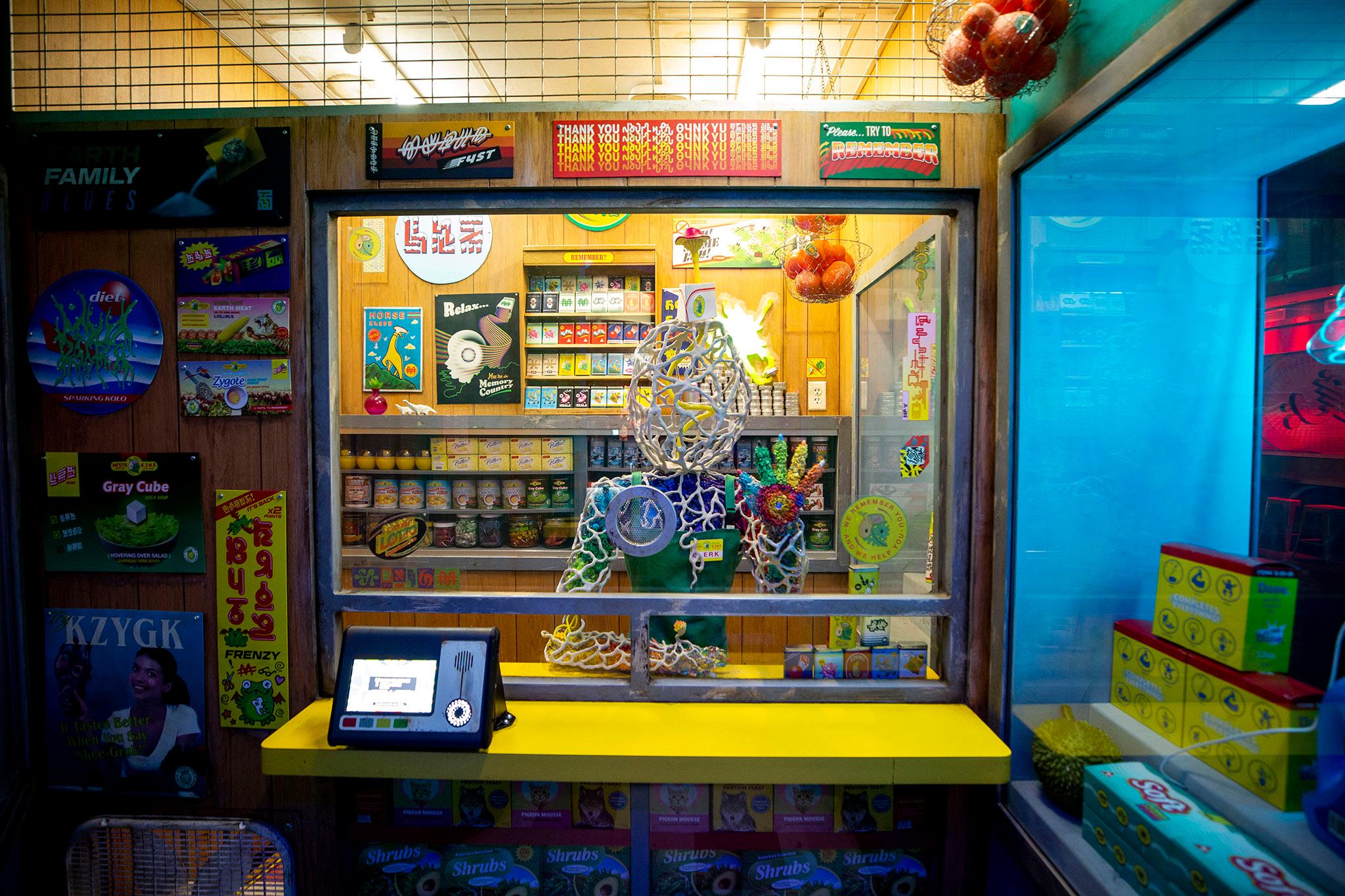
Each room is an explosion of light, sound and visual art that engages your senses and makes you feel as though you're really moving through fantastical worlds. According to one of the Meow Wolf artists, each room's sound was designed in the same tempo and key (C-major) so the music blends seamlessly when you move from room to room. There are dozens of secret rooms, hidden passageways and tunnels that spit you out into different worlds, not to mention the tiny details, easter eggs, puzzles and narrative clues embedded in each room. You're meant to get a little lost in it all, and you will. Luckily, there are actors in costume to help guide you through the maze-like exhibit and drop hints about the narrative.
The exhibit features artwork both from Meow Wolf's internal team and from Colorado artists like Kayln Heffernan and Gregg Ziemba of Wheelchair Sports Camp, Frankie Toan, Lumonics, Scott Hildebrant, Ladies Fancywork Society and Molina Speaks. The artists are given a ton of freedom when it comes to the design of their rooms. Chadney Everett, Meow Wolf's senior creative director, said that if artists want to be involved in the story, Meow Wolf will bring them into it, but mostly the Meow Wolf creative team builds the world around the individual artists' designs, integrating them into the larger narrative.
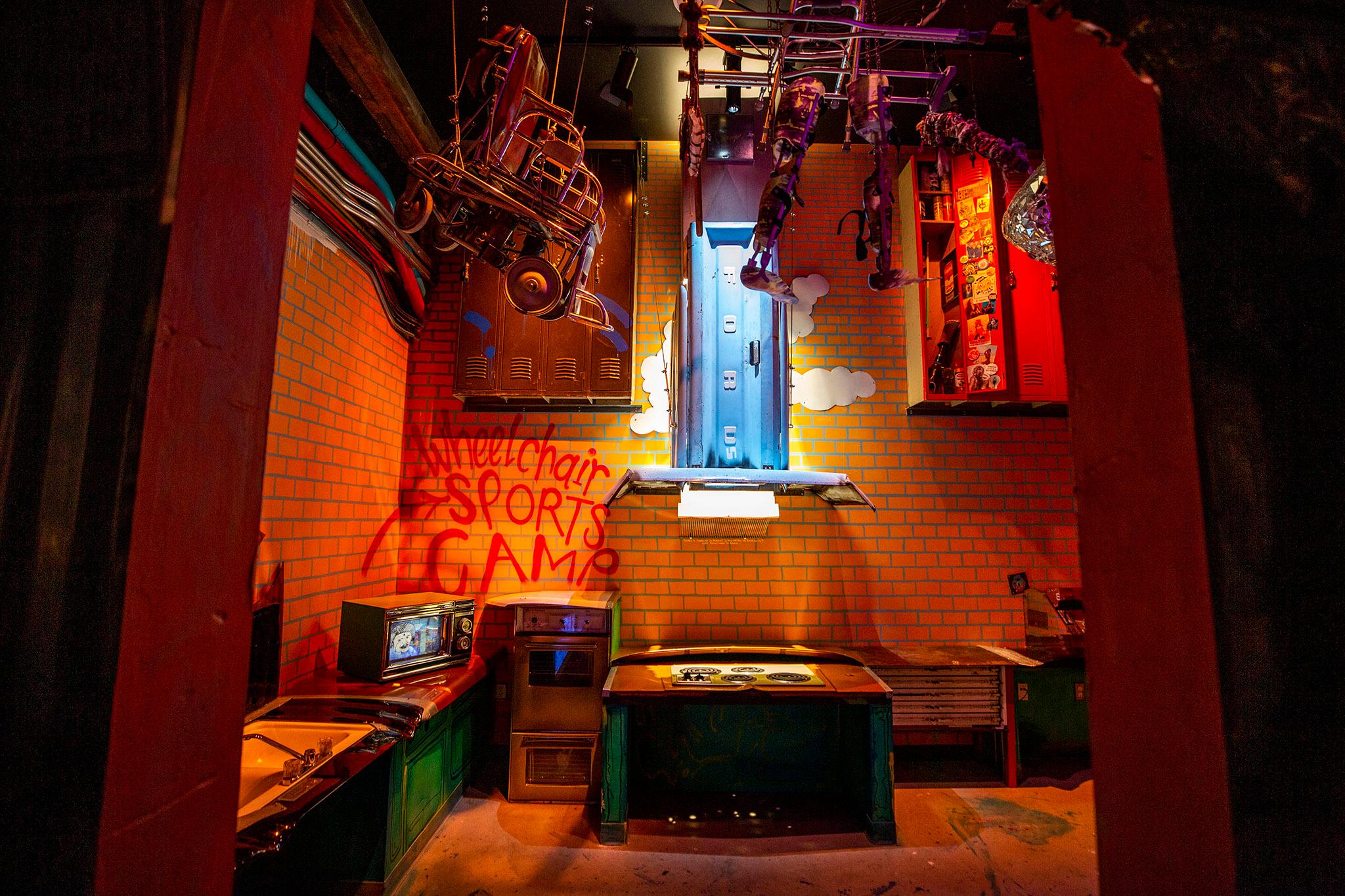
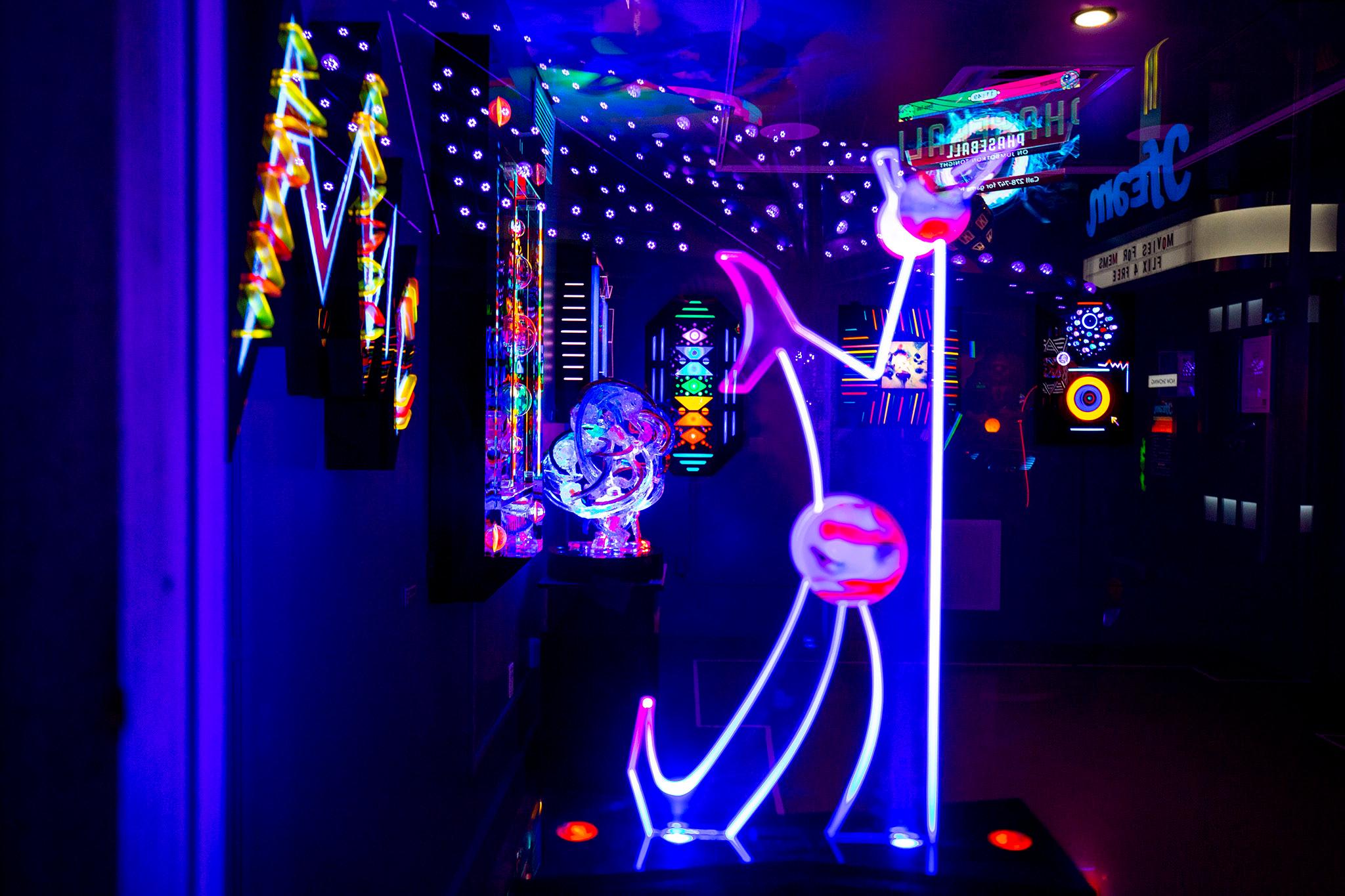
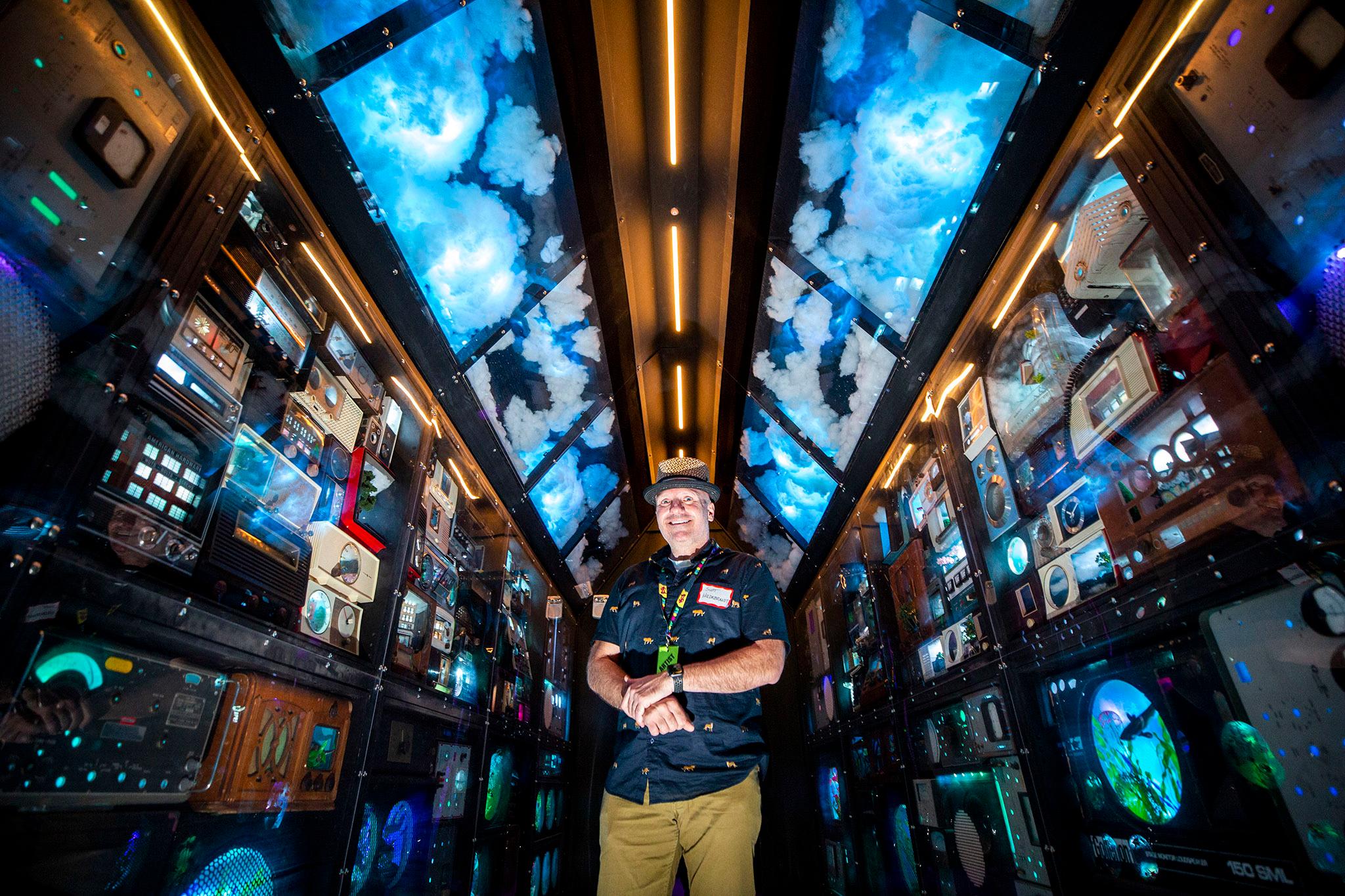
"A lot of artists we work with think that they are supposed to be creating according to our story, but the truth is we want to work with these artists because we like what they do," Everett said. "There's something so delightful for us in having a door and opening it and something absolutely unexpected is on the other side."
There are several Denver shout-outs incorporated into the exhibit.
"One of the things we heard very early on from the Denver community was that they wanted to see themselves reflected in our exhibition," said Danika Padilla, Meow Wolf's Senior Director of Social Impact. For example, artist team Andrew Novick, Pamela Webb and Robert Ayala installed recreated signs for the Celebrity Sports Center and Cinderella City's Cinder Alley. There's also a recycled 1960s RTD bus redesigned to pay tribute to the ADA movement, the Gang of 19 and the importance of having accessibility in the exhibition. Padilla says more than 90 percent of the exhibition is wheelchair accessible.
Notably, the bus also has a sign that reads "Sun Valley," the neighborhood that Convergence Station was built in.
"Sun Valley is our closest community and neighbor, and Sun Valley is really a melting pot of cultures and people," Padilla said. "That is also one of the big things here (in Convergence Station) around people coming together from all different worlds and all different places."
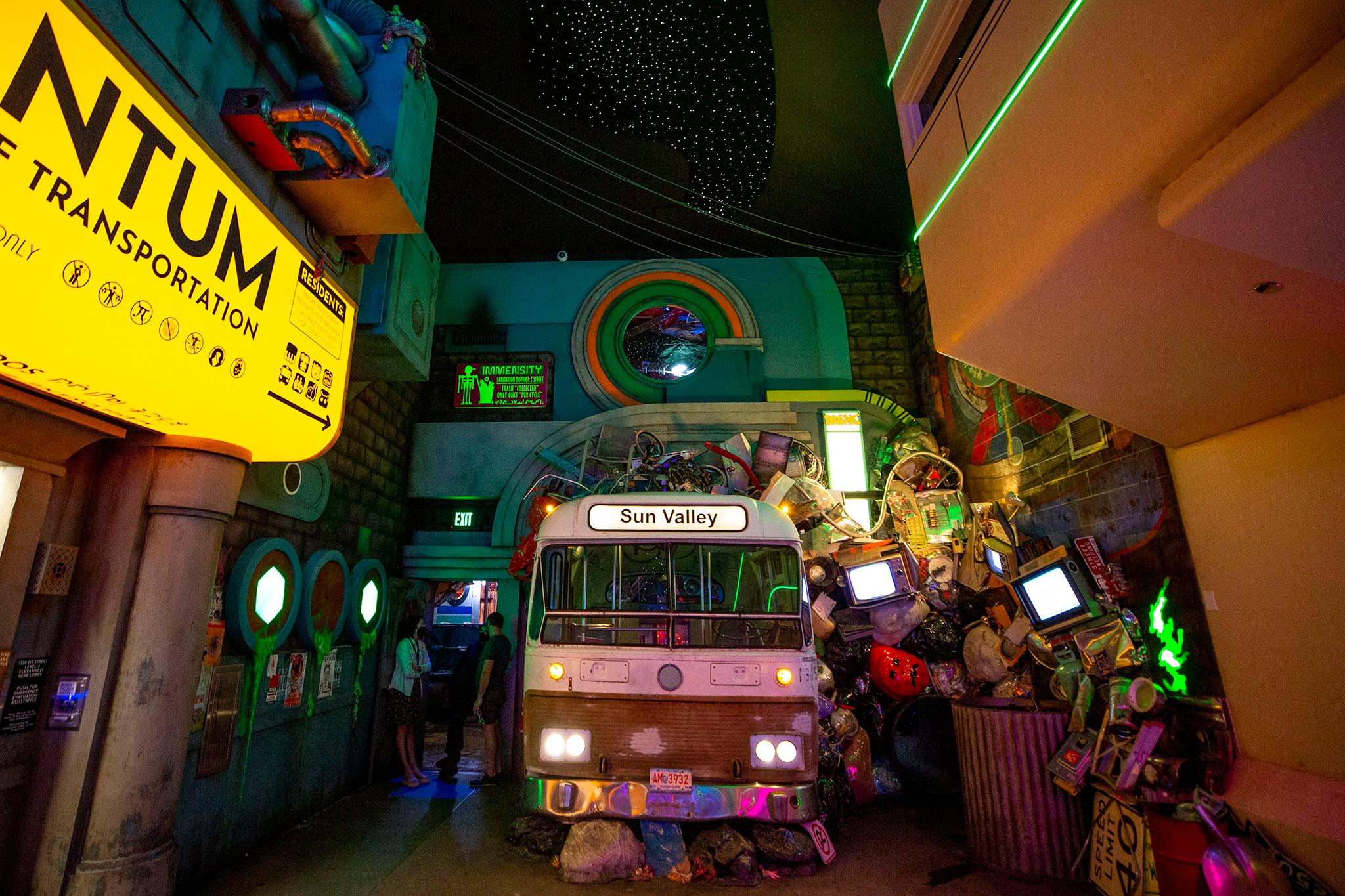
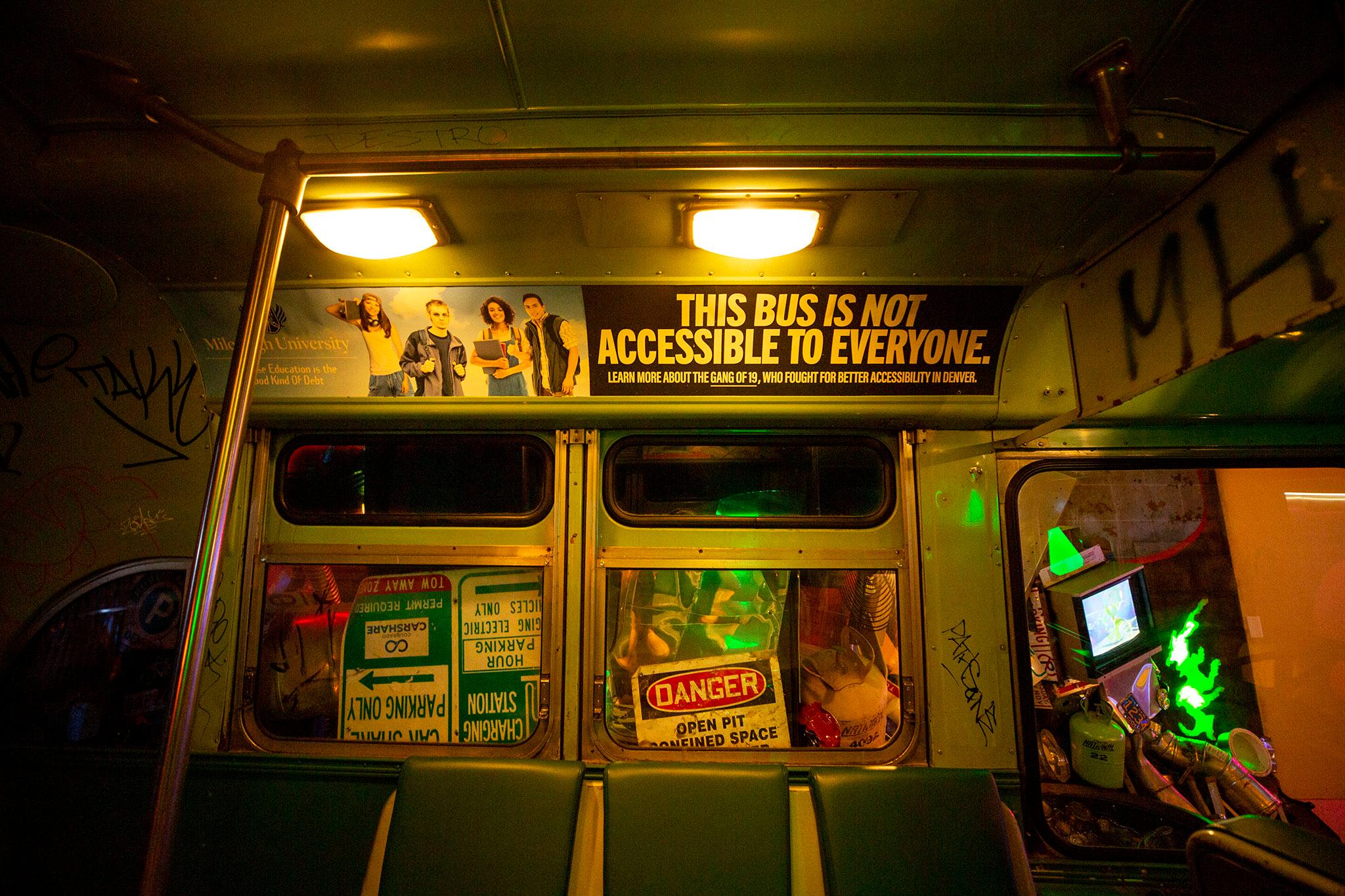
You could spend hours at Convergence Station and barely scrape the surface.
It contains multiple universes, after all. There are posters, newspapers, timed messages and other hidden clues into the disappearance of the forgotten women and the possibly sinister origins of the Convergence. Did QDOT have a role in its creation? What is the ominous "Last Stop" referenced throughout the exhibit? That's for each visitor to navigate for themselves if they choose to dedicate the time.

